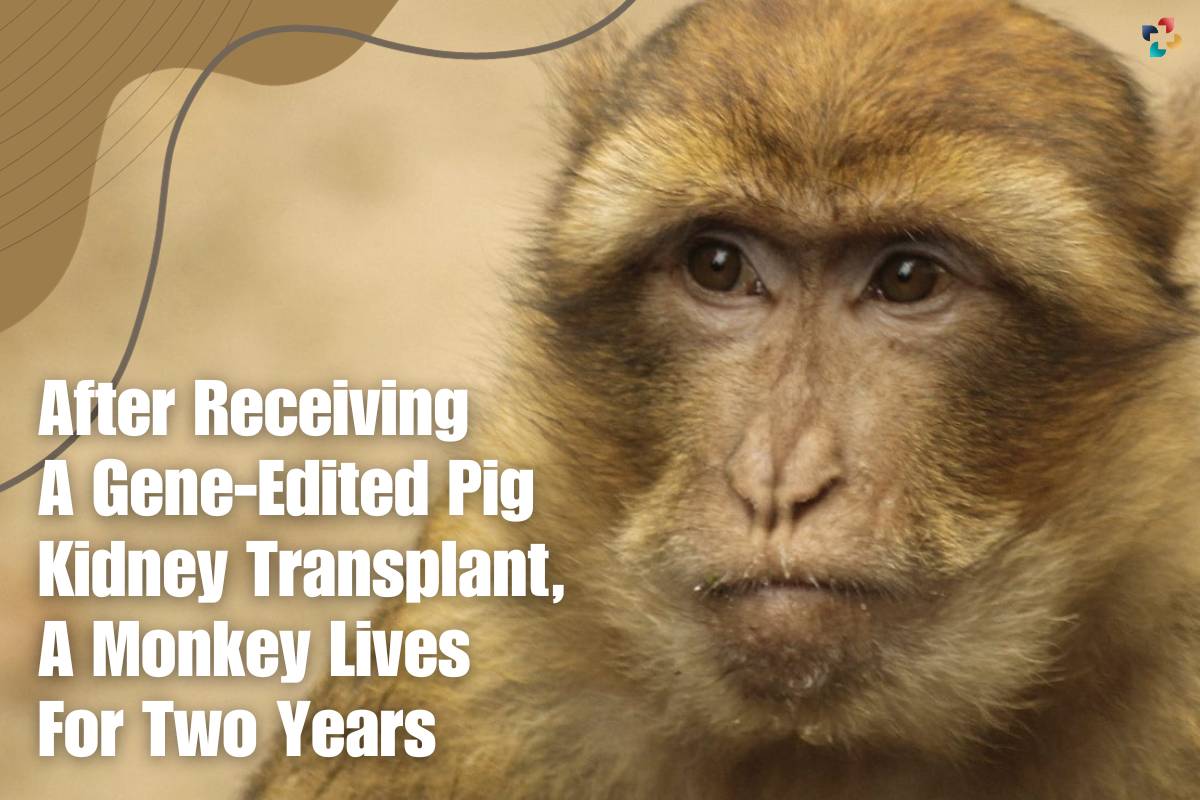One of the longest survival durations for an interspecies organ transplant was achieved when a monkey received a kidney transplant from a genetically modified miniature pig. The accomplishment moves medical professionals closer to their objective of reducing the scarcity of life-saving human organs through the use of animal organs, or xenotransplantation. The article outlines a variety of genome alterations that are essential for using pig organs for human transplantation because they stop the recipient’s immune system from fighting the new organs and neutralise any hidden old viruses.
According to researchers, this study will provide regulators more information to evaluate when deciding whether to authorise the first human trials of non-human organ transplants, including the US Food and Drug Administration. But experts think it’s crucial to investigate why there was such wide variation in the performance of the recently described xenotransplants and whether mass-producing pigs with such extensive alteration will be practical.
A Pig to a Human
Recently, scientists have successfully transplanted pig hearts into two living individuals2 and shown that pig kidneys3 and hearts4 can function in humans who have been ruled legally dead.
According to David Cooper, a xenotransplant immunologist at Massachusetts General Hospital in Boston who was not involved in the study but serves as a consultant for eGenesis, such research is essential given the scarcity of qualified organ donors. More than 100,000 people are waiting for an organ transplant in the United States alone, and nearly 17 of them pass away every day.
Due in part to the fact that the organs of pigs (Sus domesticus) are similar in size and anatomy to those of humans, xenotransplantation research has primarily concentrated on these animals. However, three chemicals on the surfaces of pig cells trigger an immunological response in humans and other primates, which makes them reject intact pig organs. As a result, scientists began to block the genes that code for certain enzymes using the genome-editing tool CRISPR-Cas9.
The most thorough modification of 69 genes in live pigs used for xenotransplantation was performed by Qin and her coworkers. In addition to 59 modifications that target retrovirus genomes that were long ago ingrained in the pig genome, three edits target molecules related to rejection.
Xenotransplantation: Pig-to-human kidney transplant 3D animation
Although earlier studies 5,6 have demonstrated that these embedded genomes can generate viral particles that infect human cells in a lab setting, the danger of infection to human xenotransplant patients and their transplanted organs is unknown.The final seven changes are the inclusion of human genes that support the continued health of the transplanted organ. For instance, two genes produce proteins that stop unneeded blood clotting.
Using these gene-edited pigs, Qin and her colleagues performed a kidney transplant on more than 20 cynomolgus macaques (Macaca fascicularis), which were also given an immunosuppressive medication cocktail. Without the seven human genes, no animal who got kidney transplants lived more than 50 days. Comparatively, kidneys containing human genes were implanted in 9 out of 15 monkeys. Of those six monkeys, five survived for more than a year and one for more than two. Kidney biomarkers research demonstrates that the transplanted organs functioned exactly as well.
Traditional pig organ transplant recipients experience rapid organ growth, endangering the grafts. Some researchers have attempted to turn off the pig genes that cause this growth, but Muhammad Mohiuddin, a xenotransplantation surgeon at University of Maryland School of Medicine in Baltimore, warns that this action has unforeseen consequences. He applauds the researchers that used the kidneys from small pigs, whose organs develop more slowly, to solve this issue in the Nature paper.
Survival Time Range
Even while Qin recognises that survival times of up to two years are rare, the times were more erratic than the team had anticipated. However, the pig genomes were created with people in mind, not non-human primates, thus Mohiuddin asserts that it is possible that they will perform better in humans.
However, Jayme Locke, a transplant surgeon at the University of Alabama in Birmingham, warns that the transition to humans won’t be easy. It’s unknown whether the pig organs will hold up in that environment because humans are much heavier and have higher blood pressure than these monkeys, she continues.
Not all scientists agree that such profound genetic modifications are required. The transplant (xenotransplant) immunologist Megan Sykes of the Columbia University Medical Centre in New York City commends the researchers for examining the impact of such a large number of genes.
However, she notes that the survival is not “strikingly better than what has been seen before with many fewer gene modifications”. They get more difficult to manufacture with each additional gene alteration, which could make scaling up more challenging, according to her.
Mohiuddin concurs in theory that some of these modifications may be “overkill,” but he is hopeful that one day there may be genetically altered pigs that do away with the necessity for immunosuppressive medications.
“I don’t think we know yet how simple [these gene edits] can be or how complex they need to be,” says Locke. The value of these clinical trials will definitely be seen in such situation.











